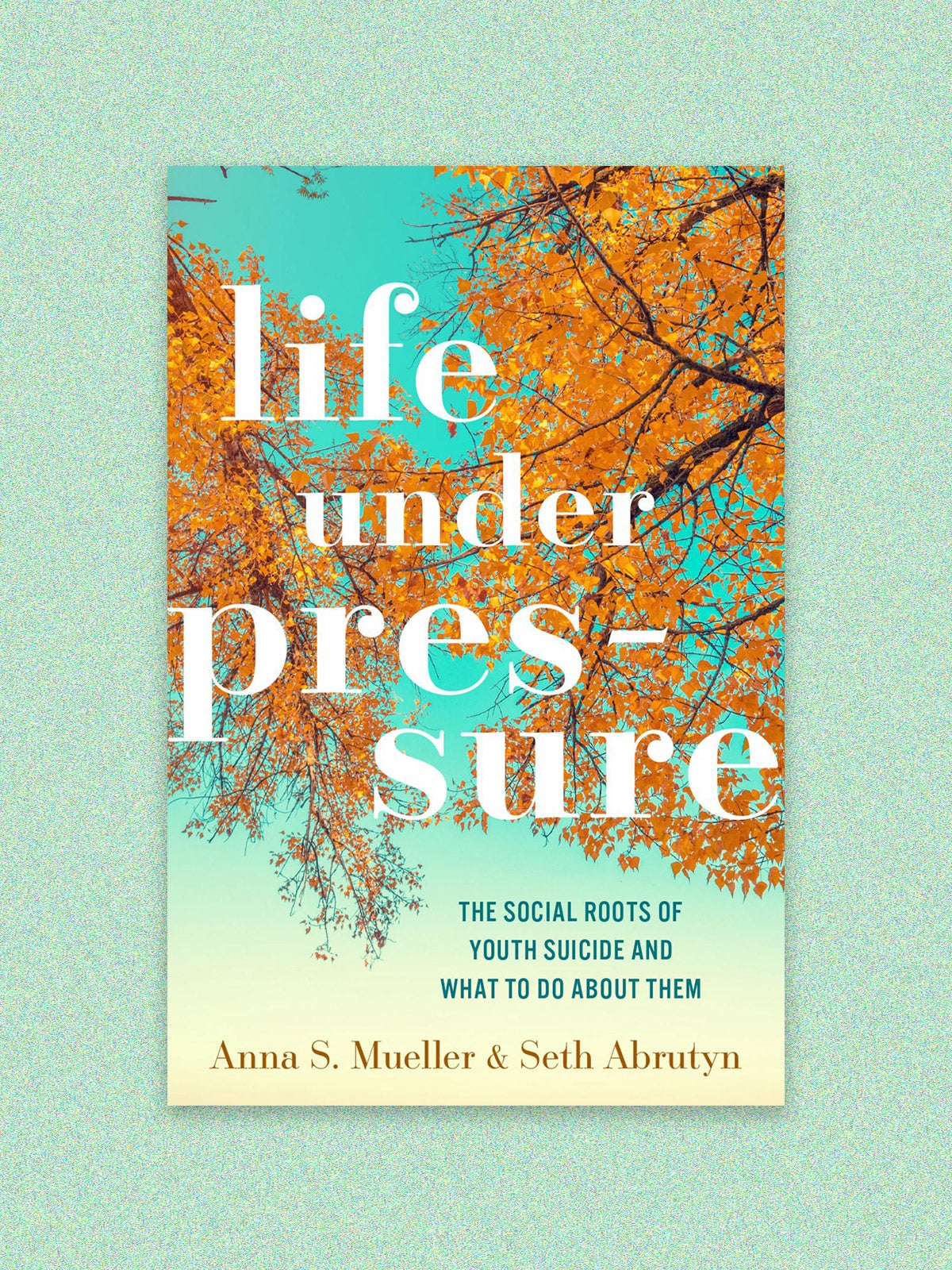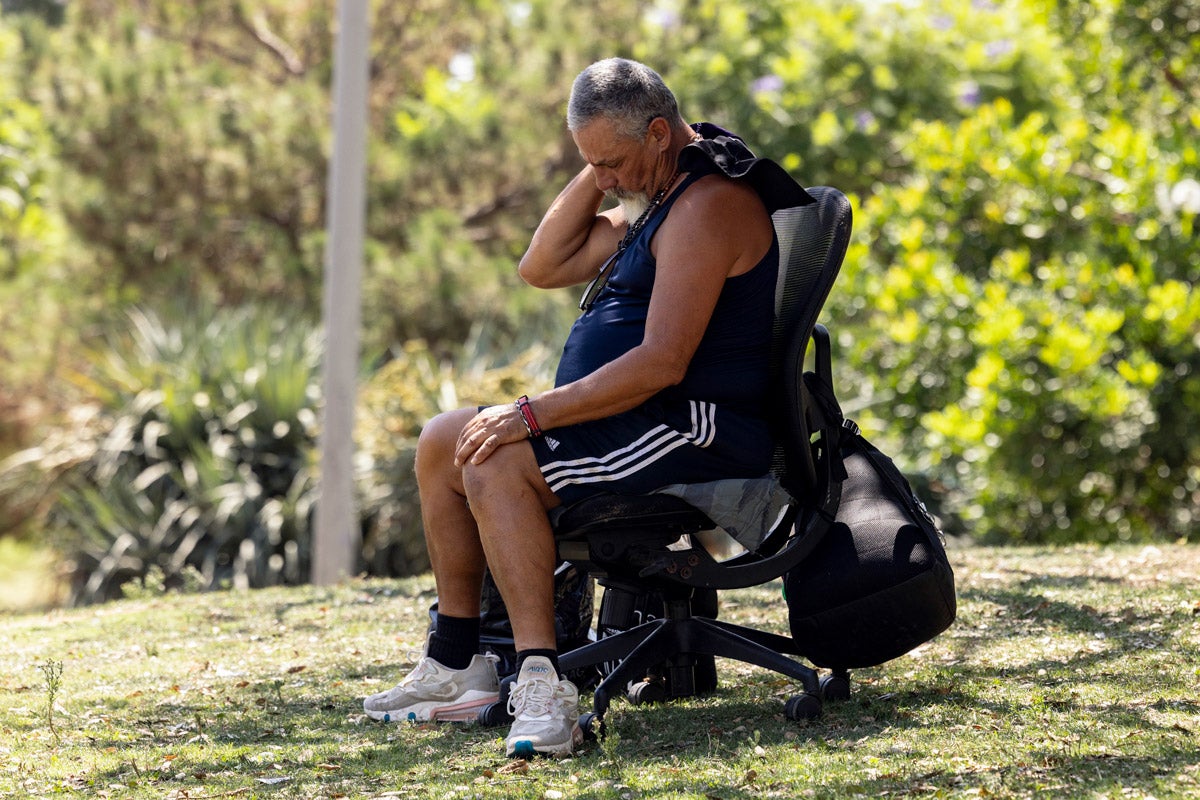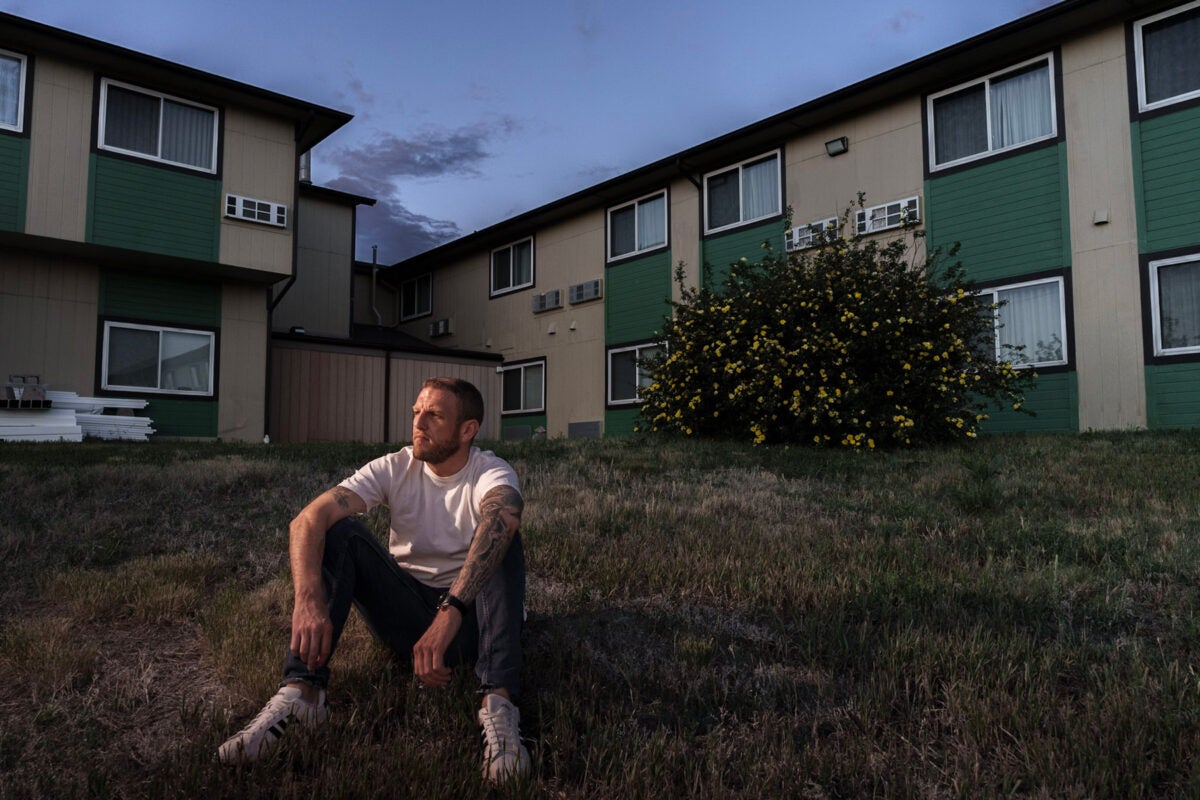
Book
Talking about suicide saves kids’ lives
In a series of journal entries she labeled “The Last 10 Days of My Life,” high school junior Aria described struggling with depression below the surface of her “perfect” life. She was surrounded by social supports that should have been protective—loving parents, devoted friends, and a tight-knit community—but Aria concluded that the only way to end her pain was to take her own life.
Youth suicide in the United States has risen significantly in the past 25 years—particularly since the mid-2000s—but it remains a relatively rare event. But in their new book, Life Under Pressure: The Social Roots of Youth Suicide and What to Do About Them, authors Anna S. Mueller and Seth Abrutyn describe Aria’s death as part of an alarming trend in her hometown, which Mueller and Abrutyn call Poplar Grove. Between 2000 and 2015, Poplar Grove experienced 19 teen suicides, often in clusters; eight of those suicides occurred in a short, two-year period.
Poplar Grove’s residents are mostly affluent and well-educated. They have a well-resourced school and access to green spaces; are actively engaged in civic, arts, and faith community activities; and take pride in knowing their neighbors. Children in Poplar Grove grow up surrounded by people who want to help. So why do some feel so hopeless?
A scientist from Poplar Grove contacted Mueller, a sociologist specializing in youth suicide, to ask for help addressing this question. Mueller enlisted fellow sociologist Abrutyn, and the pair embarked on a years-long community-engaged research project that resulted in published research and this book.
Sign up for Harvard Public Health
Delivered to your inbox weekly.
The authors worked to gain residents’ trust, and they built up a study sample of youth, parents, and people from the community’s mental health safety, net including clinicians, teachers, and crisis responders. They also made observations of daily life in Poplar Grove and read the writings of Aria and other students who died by suicide, which were shared by their parents. At the conclusion of their research, the authors shared their findings with the community (and continue to advise on suicide prevention).
As their research took shape, they began to see a toxic side to this idyllic community. School activities and children’s achievements play a central role in the life of the town. Football games are major social events, where parents meet to gossip and brag about their kids. Everyone knew whose kid got an Ivy League scholarship and whose went on antidepressants.
Because of the town’s relatively homogenous demographics, kids experienced limited models for what can make a happy and successful life. Academic and athletic excellence were expected—not just to secure their own bright futures but to maintain the town’s stellar reputation. And just doing well was not enough. To be seen as a good kid from a good family, a young person had to be sociable and fun, and make their life look effortless.
Failure to live up to these high expectations was not an option, and kids suffered from the pressure. The authors describe one over-scheduled middle schooler breaking down and screaming to her parents that she just wanted to go outside and ride her bike; another high schooler was convinced he would wind up homeless if he failed a test.
When some of these “good” kids took their own lives, responses from the school and community were mixed. The impulse often seemed to be to shut down discussion and quickly move on, leaving kids feeling lost and confused.
There is little data on the prevalence or risk factors for youth suicide clusters, which the Centers for Disease Control and Prevention (CDC) defines as a group of suicides or suicide attempt occurring closer in time and space than would normally be expected in a community. Earlier this year, the CDC updated its guidance for responding to a suicide clusters, noting the importance of minimizing sensationalism in reporting or talking about the death. It also suggested considering two sides of social media—as a tool to bring survivors together and as a potential vector for spreading harmful information.
Mueller and Abrutyn write that schools face considerable challenges following a suicide. Teachers and administrators rightly fear inspiring contagion through excessive memorialization of the deceased student. Particularly in a town like Poplar Grove, kids may see taking their own life as a way to receive attention and prestige. But moving in the other extreme by shutting down kids’ desires to talk about and remember a friend can also be harmful.
“Bringing suicide out of the silence is the safer choice,” the authors write. They advise having difficult conversations, rather than shying away from them, and using authentic concern for students’ mental health as the guiding principle for responding to a suicide. For example, several youths talked about the importance a deceased classmate’s empty chair could take on, and the hurt they felt when teachers either ignored it or took it away too quickly. The authors suggest the chair could be left out for a little while, and then seating rearranged—in each case, in conversation with the class.
Throughout the book, they advocate for giving kids a role in creating communities that nurture their wellbeing. In Poplar Grove, they write, kids’ concerns around rigid expectations were often not taken seriously.
The authors also make a strong case for normalizing mental health struggles and making suicide prevention part of the curriculum. Among the common myths about suicide they note is that it comes out of nowhere. In Poplar Grove, the suicide deaths of kids who seemed to embody the town’s ideal were particularly shocking. Some kids described wondering who would be next, and if they themselves would one day wake up with suicidal thoughts.
Aria’s parents are among those in Poplar Grove who are working to destigmatize mental health concerns and to encourage kids to seek help if they need it. By openly discussing their own pain following their daughter’s death, they may be helping to keep other kids alive, the authors write. The authors found that kids with suicidal thoughts were profoundly affected by seeing an example of the devastation they would leave behind in their own families if they chose to take their life.
They end the book with a plea for talking about suicide and mental health in effective and non-stigmatizing ways. If you are unsure what to say, they write, “let empathy guide you. Active compassionate listening goes a long way.”
Book cover courtesy of Oxford University Press


